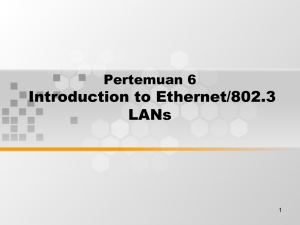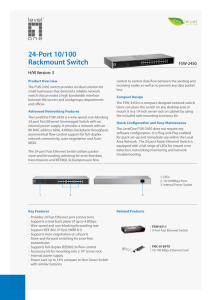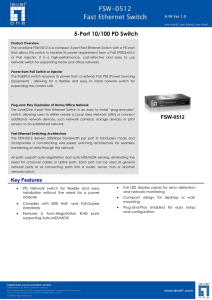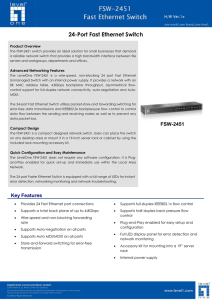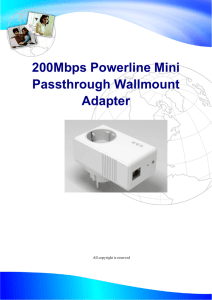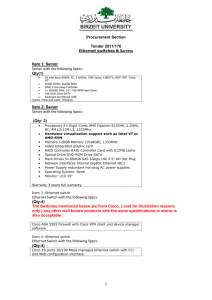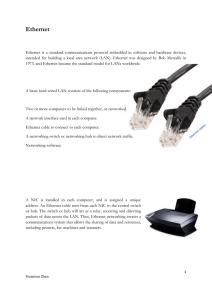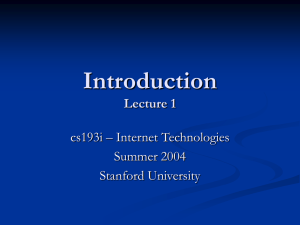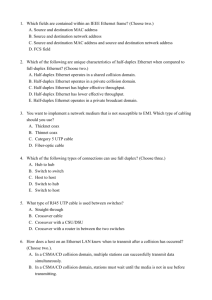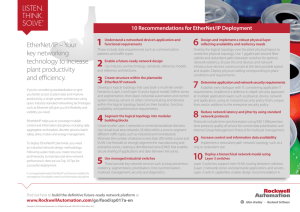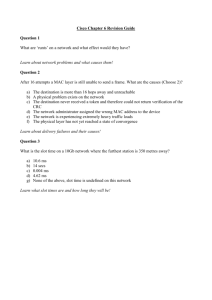Chapter 4
advertisement
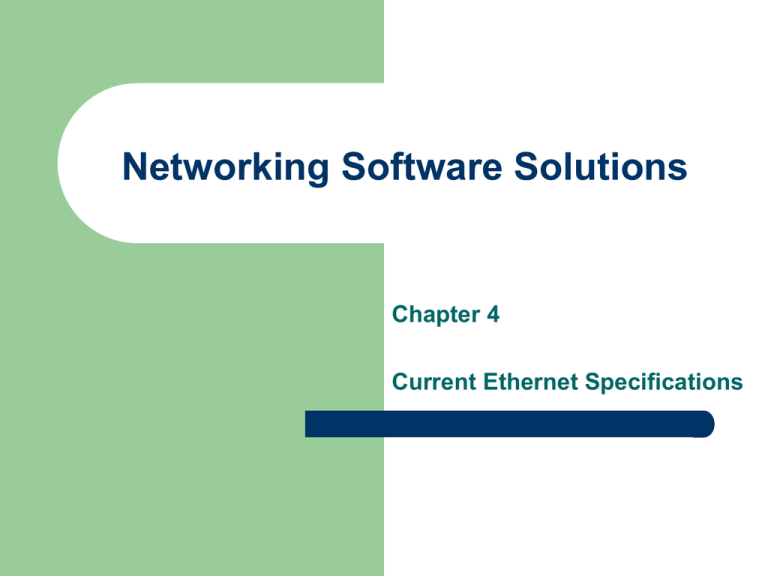
Networking Software Solutions Chapter 4 Current Ethernet Specifications Network Basics Bob and Sally example on page 99 – Read and understand address resolution Ethernet Basics Collision domain is Broadcase domain is CSMA/CD is Half-duplex and full-duplex* are Full-duplex points to remember (104) There are no collisions in What is required for each full-duplex host? What must be capable of running in full-duplex mode for it to work? Ethernet at the Data Link Layer Binary / Decimal / Hexadecimal conversion Bits, nibbles, and bytes MAC address composition – – – – – ___ bits Bit 1 identifies whether Bit 2 identifies Next ____ bits identify _______________ Final ____ bits identify _______________ Ethernet Frames (page 109) Preamble – SFD – DA – SA – Type / Length – Data – FCS – Channel Bonding What is it? Why do it? Ethernet at the Physical Layer Ethernet developed by DIX – – – D= I= X= IEEE 802.___ “When designing your LAN, it’s really important to understand the different types of Ethernet media available to you.” Media = _________ Ethernet Standards EIA / TIA standards – – – – – – How many pair? Distance before attenuation? Categories RJ__ connector ____ cable 568A, 568B More Ethernet Standards IEEE standards (p. 112) – – – – – – – – – 10Base-2 – 10Base-5 – 10Base-T – 100Base-TX – 100Base-FX – 1000Base-CX – 1000Base-T – 1000Base-SX / 1000Base-LX – 10GBase-T – Los Endos
